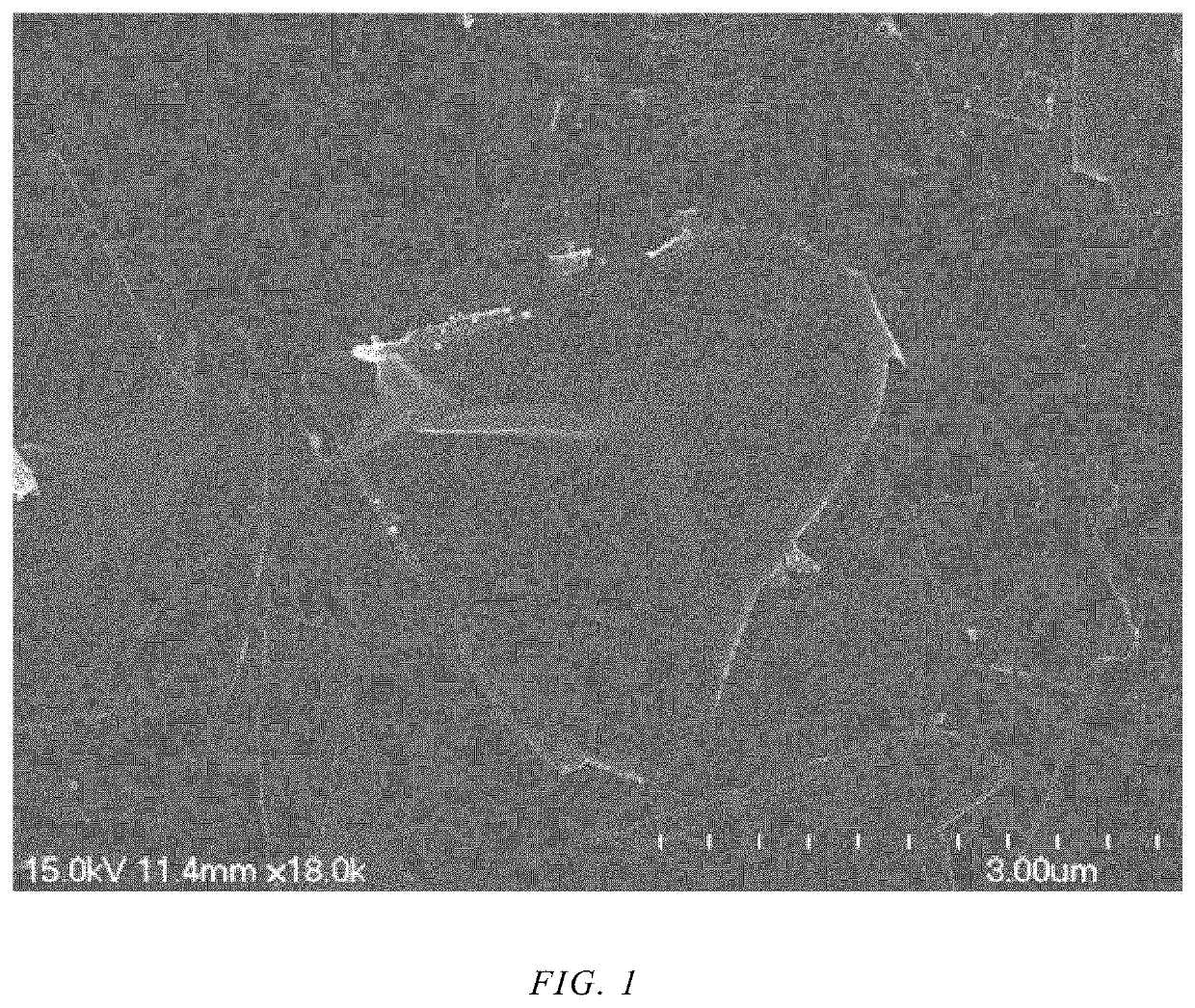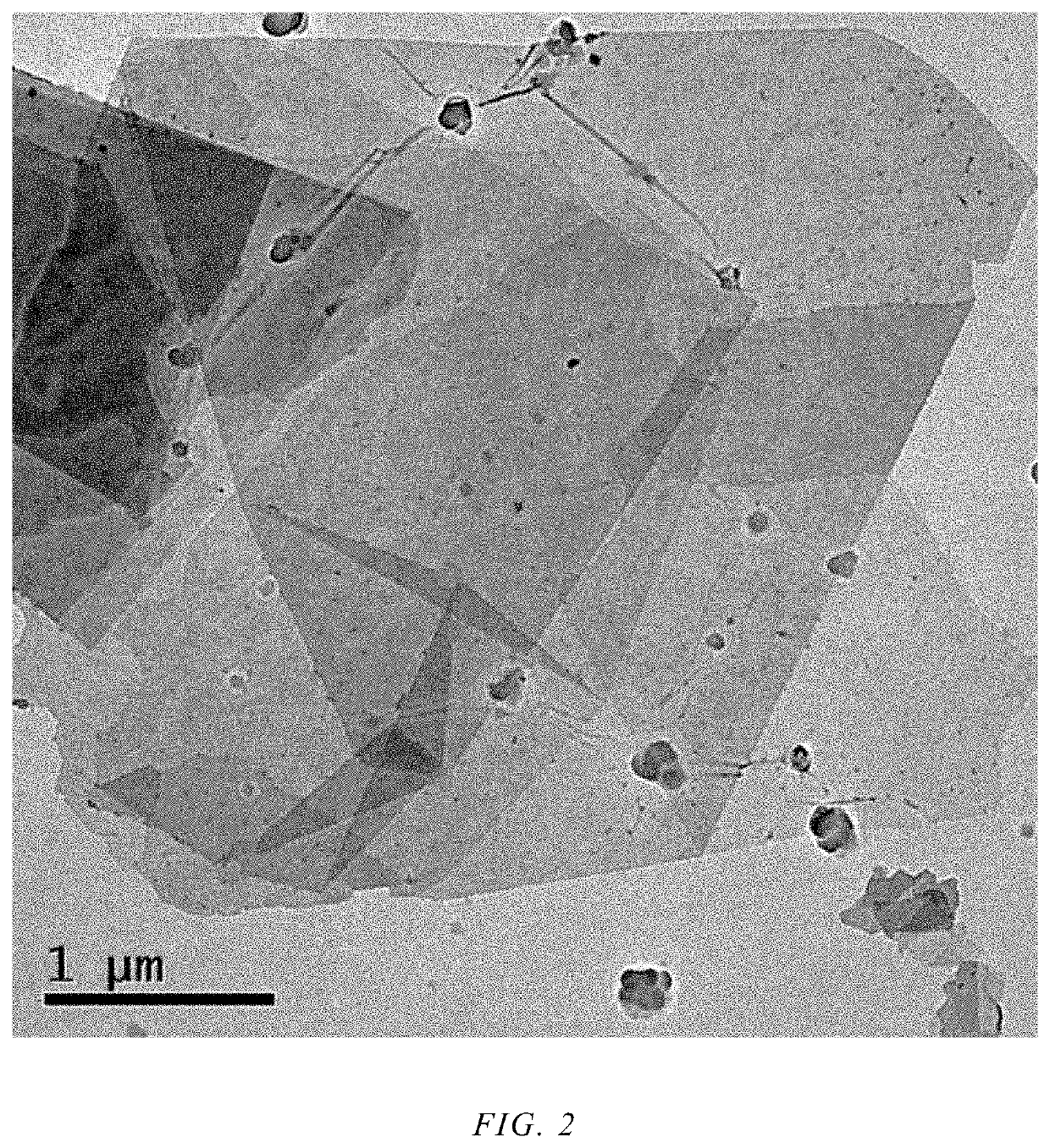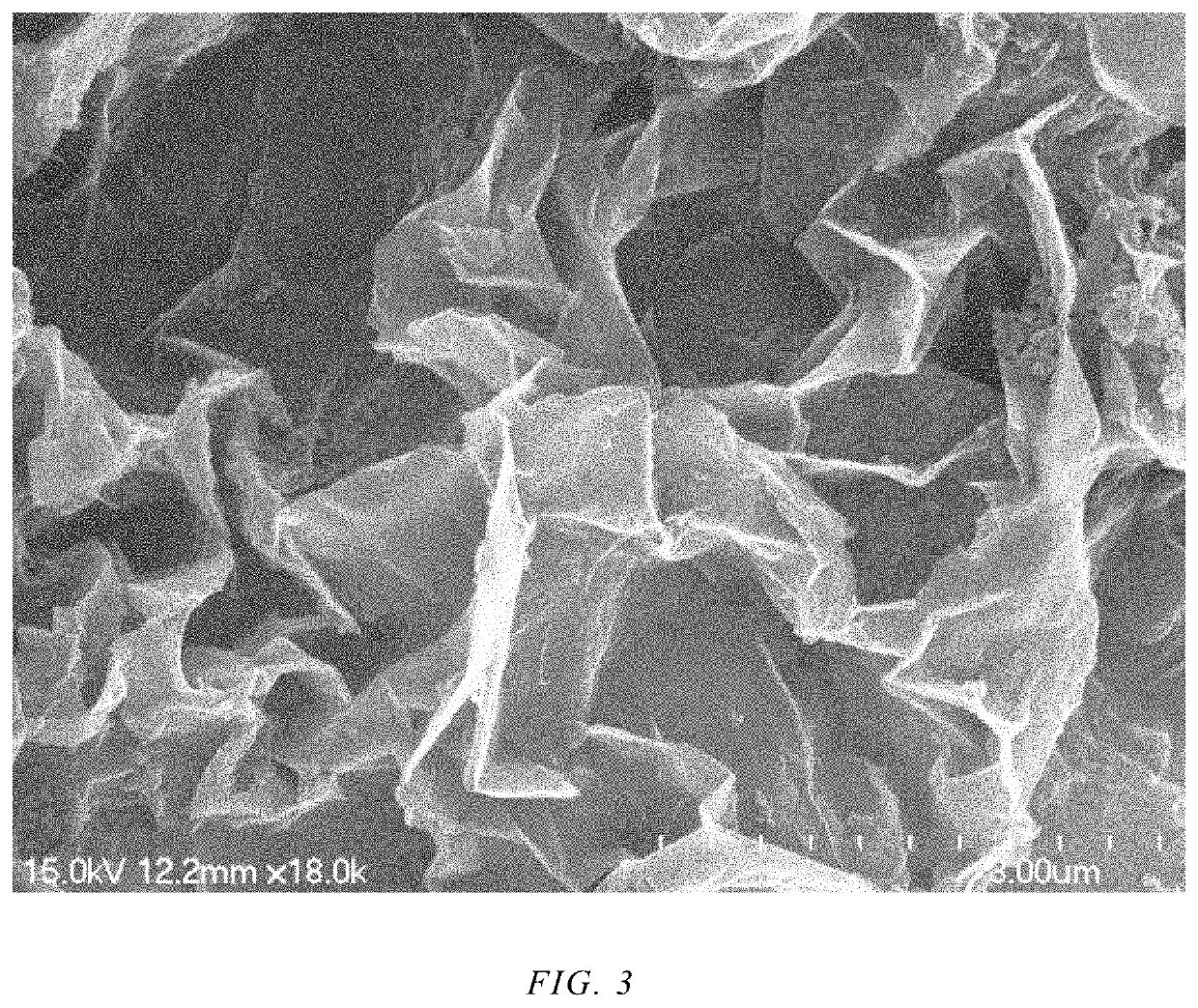Two-dimensional nitrogen-doped carbon-based titanium dioxide composite material, and preparation method and application thereof for degrading and removing organic pollutants in water
a titanium dioxide and composite material technology, applied in the field of inorganic nanocomposite materials, can solve the problems of low utilization efficiency of photogenerated carriers, and achieve the effects of low cost, good repeatability, and large siz
- Summary
- Abstract
- Description
- Claims
- Application Information
AI Technical Summary
Benefits of technology
Problems solved by technology
Method used
Image
Examples
embodiment 1
[0033]Preparation of two-dimensional Ti3C2 MXene nanosheet.
[0034]0.8 g lithium fluoride is added into 10 ml 9 mol / L HCl and stirred for about 5 minutes. Ti3AlC2 is added in batches within 5 minutes. Then the reaction is stirred at room temperature for 24 hours to etch. The reaction products are ished by centrifugation with water. When pH is 6 or so, ultra-pure water is added. After 10 minutes of hand shaking, the solution is layered and centrifuged again, the two-dimensional transition metal carbide Ti3C2 MXene is obtained. The black colloidal suspension is stored in a refrigerator at 4° C.
[0035]FIG. 1 is a SEM image of Ti3C2 MXene and FIG. 2 is a TEM image of Ti3C2 MXene. From the above figure, it can be seen that Ti3C2 MXene is a two-dimensional layered material. The thickness of the nanosheet is in the nanometer scale, the size of the plane is in the micron level, with fewer surface defects and larger specific surface area.
embodiment 2
[0036]Protonation of melamine and its Electrostatic self-assembly with Ti3C2 MXene nanosheet.
[0037]Add 2 g of melamine to a 50 mL flask, add 30 mL of absolute ethanol, and stir vigorously for 1 h. Then, 3 mL of concentrated hydrochloric acid is added to the above mixed solution. The resulting mixture is further stirred for 1 h, then centrifuged, and transferred to an oven to evaporate the solvent; finally, the dried solid is ground into a powder and centrifuged several times with water and ethanol to obtain a protonated melamine as a nitrogen-containing cationic compound.
[0038]The protonated melamine is dissolved in 50 mL 0.1 M dilute hydrochloric acid, and the colloidal suspension 50 mL of Ti3C2 MXene nanotablets obtained in embodiment 1 is electrostatically self-assembled with protonated melamine according to the weight ratio of etched Ti3C2 MXene to protonated melamine as 1:4. When protonated melamine is added to the etched Ti3C2 MXene suspension, the positively charged protonate...
embodiment 3
[0040]Preparation of two-dimensional nitrogen-doped carbon-based titanium dioxide composites (2D N—(C / TiO2)).
[0041]Two-dimensional nitrogen-doped carbon-based titanium dioxide composites are synthesized by placing the above-mentioned freeze-dried nanosheet aggregates in a high temperature tubular furnace in a CO2 atmosphere with the flow rate of 75 sccm, at a heating rate of 6° C. / min to 550° C. for 4 h and cooling naturally.
[0042]FIGS. 4 and 5 are TEM and SEM diagrams of two-dimensional nitrogen-doped carbon-based titanium dioxide composites, respectively. It can be seen from the figure that the calcination process does not break the layered skeleton of Ti3C2 nanosheet, the composite material maintains a two-dimensional layered morphology, and the two-dimensional carbon-based surface has obvious TiO2 nanocrystal particles, uniform disperse on the surface. This indicates the successful preparation of a two-dimensional nitrogen-doped carbon-based titanium dioxide composite.
PUM
| Property | Measurement | Unit |
|---|---|---|
| temperature | aaaaa | aaaaa |
| time | aaaaa | aaaaa |
| temperature | aaaaa | aaaaa |
Abstract
Description
Claims
Application Information
 Login to View More
Login to View More - R&D
- Intellectual Property
- Life Sciences
- Materials
- Tech Scout
- Unparalleled Data Quality
- Higher Quality Content
- 60% Fewer Hallucinations
Browse by: Latest US Patents, China's latest patents, Technical Efficacy Thesaurus, Application Domain, Technology Topic, Popular Technical Reports.
© 2025 PatSnap. All rights reserved.Legal|Privacy policy|Modern Slavery Act Transparency Statement|Sitemap|About US| Contact US: help@patsnap.com



